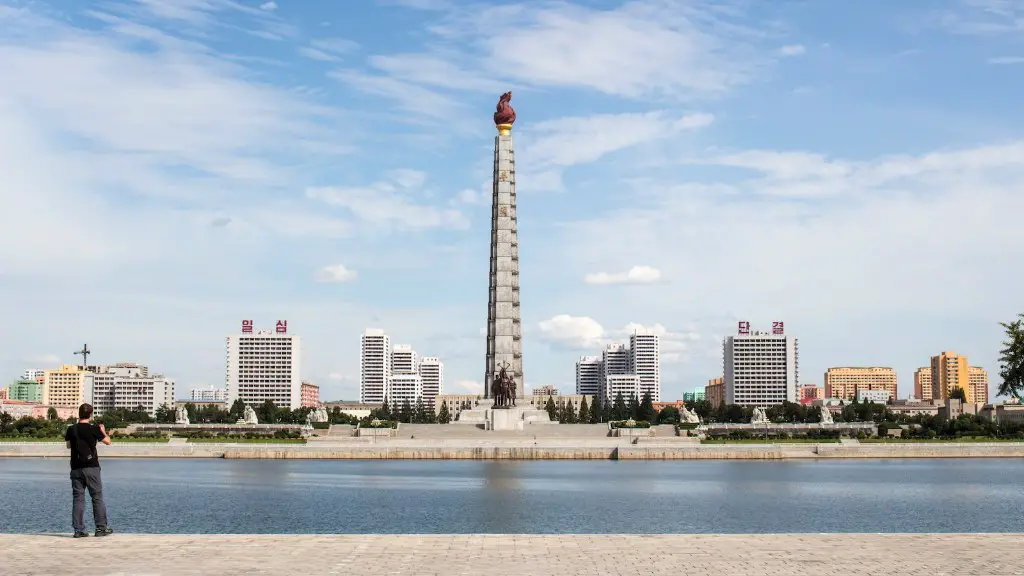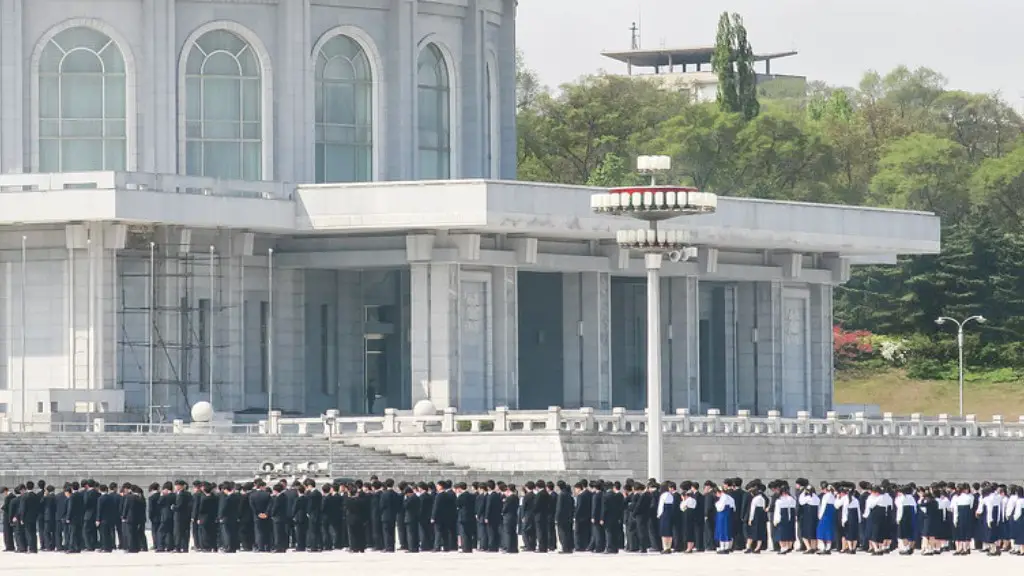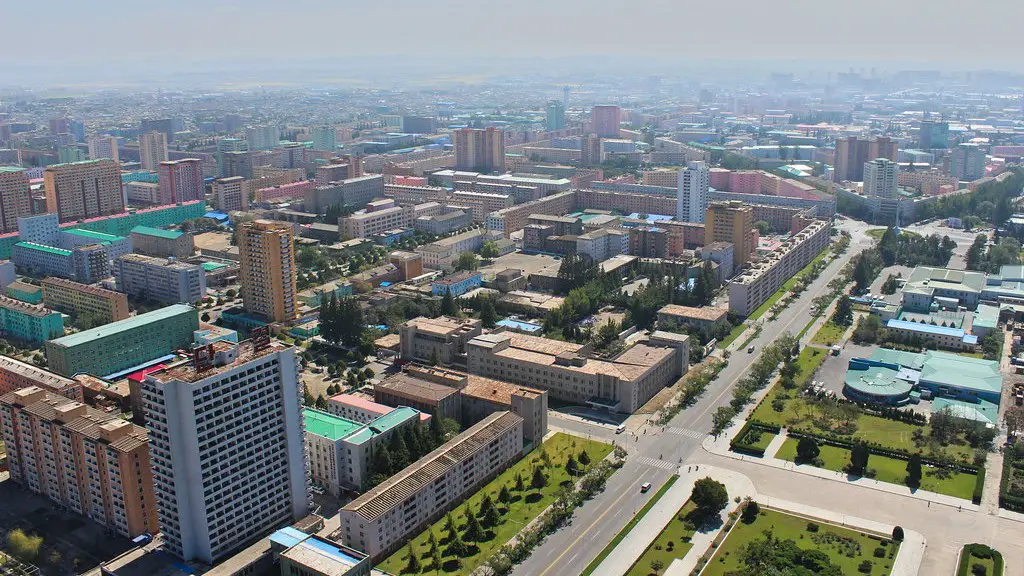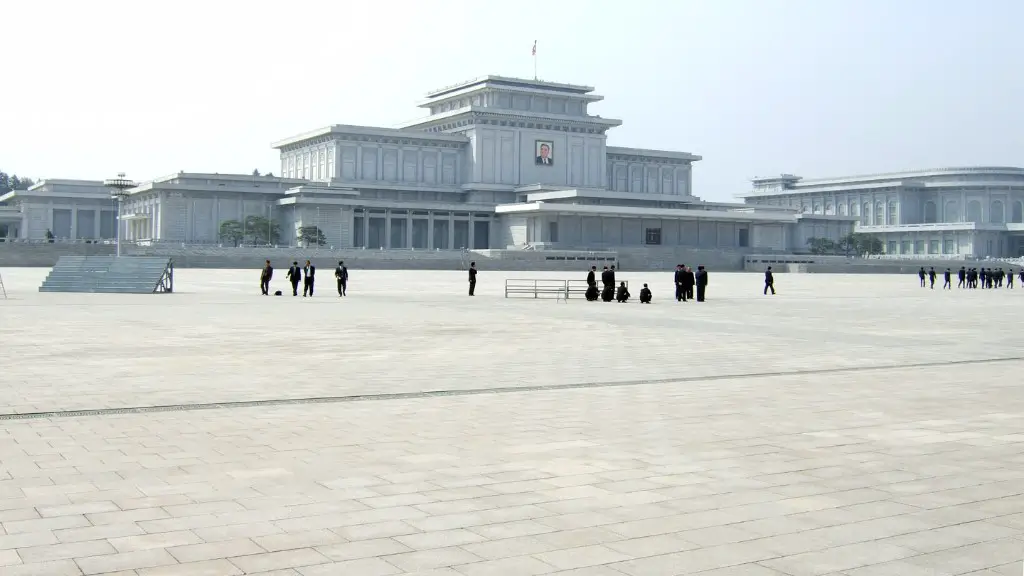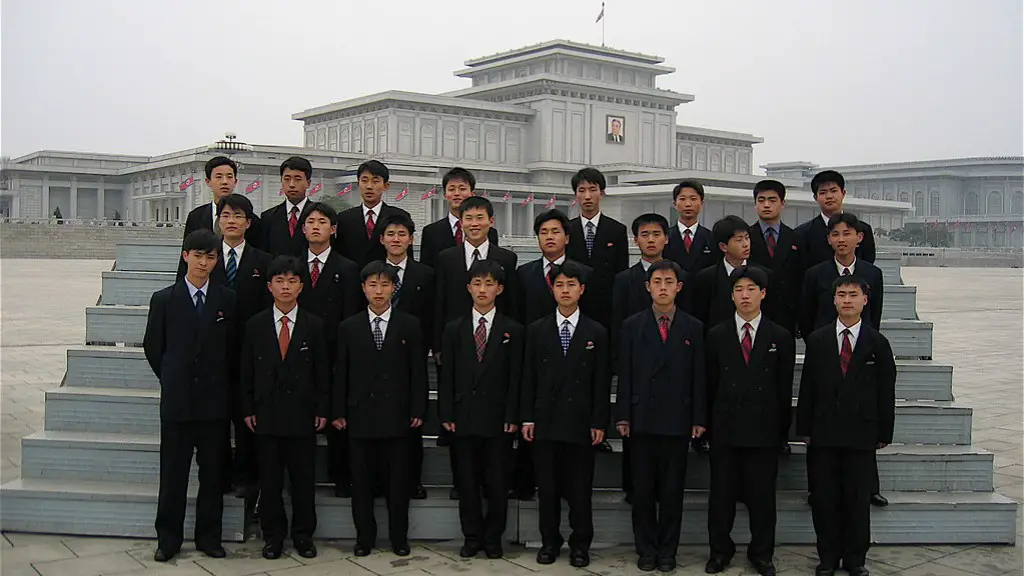The division of North and South Korea goes back to the end of World War II, when the country was divided into two parts at the 38th parallel. This division was meant to last only temporarily, but the Cold War and the end of World War II meant that the division became permanent.
Shortly after the division, in 1948, the division became more pronounced when two separate governments were formed in each of the two regions. In the north, the Democratic People’s Republic of Korea proclaimed itself, and in the south, the Republic of Korea.
The division was maintained until 1950, when the North Korean army launched an invasion of South Korea. This was the beginning of the Korean War, which would last three years and leave thousands dead and millions displaced. After the war ended, with an armistice that neither side signed, the division between North and South Korea was made official.
The division between North and South Korea has been a source of contention ever since. In recent years, there have been concerted efforts to bring the two sides closer together, including several high-profile summits between the leaders of both countries. However, the division remains deep, and the chances of reunification remain uncertain.
The division between North and South Korea has had a profound impact on the region. In the south, the economy has been far more successful than that of the North. South Korea is now a major player in the world economy, and its citizens enjoy a much higher standard of living than their counterparts in the North.
At the same time, the division has had a negative impact on the North’s economy. The country’s isolation has caused its economy to stagnate, leading to widespread poverty and famine in recent years. In addition, the North Korean regime’s nuclear weapons program has been a source of tension both in the region and abroad.
There have been recent efforts to bridge the divide between North and South Korea, but there is still a long way to go before the two sides will be reunited. With the deep differences that exist between the two countries, it may be a long time before this division is fully resolved.
Motivation of the Splitting
The division of the Korean Peninsula in 1945 was an attempt by the Soviet Union and the United States to divide the peninsula and gain control over the region. North Korea was controlled by the Soviet Union, while South Korea was controlled by the United States. This division was meant to be temporary, but due to the tensions of the Cold War and the fact that the two sides could not reach agreement, it became a de-facto division.
The Soviet Union and the United States both saw the division as a way to gain a strategic advantage. The two sides wanted to control the peninsula and thus had conflicting aims. This division would later become a permanent one and resulted in the division of North and South Korea.
The division was due to the conflicting interests of the two superpowers. The Soviet Union wanted to establish a communist regime in the North, while the United States wanted to establish a pro-capitalist regime in the South. This division would later become a source of conflict between the two countries and contribute to the outbreak of the Korean War.
Today, the division between North and South Korea is still very pronounced, with both sides having vastly different economic, political, and cultural systems. The division has resulted in a deep mistrust between the two sides, and the reunification of the Korean peninsula is a long way off.
Adverse Effects of the Division
The division of North and South Korea has had a dramatic impact on the region. In South Korea, the economy has skyrocketed in recent years, with the country becoming an economic power in Asia. In North Korea, the effects have been far more adverse. The economy has stagnated and poverty and famine are widespread.
The division has also contributed to the tensions in the region. North Korea’s nuclear weapons program has been a source of tension both in the region and abroad. Furthermore, the lack of communication between the two countries has led to mistrust and suspicion, which has only heightened the tensions between them.
The division has also had an impact on the people of Korea. Koreans on both sides have grown up in two very different worlds, and this has led to a lack of understanding between the two sides. This has made it difficult for them to bridge the gap and work towards reunification.
The division of North and South Korea has had a profound impact on the region, and its effects are still being felt today. The two sides remain deeply divided, and the chances of the two nations reunifying are slim. The division and its associated tensions remain a major source of instability in the region.
Reunification Efforts
Despite the deep mistrust between North and South Korea, there have been a number of attempts to bridge the divide and reunify the two countries. In 2018, North and South Korean leaders met, and in 2019 they agreed to open up a liaison office in the North. These are positive steps towards reunification, but they are only a small step in what will be a long and complicated process.
The two sides have also agreed to work together in certain areas, such as the opening of a joint-economic zone in the border city of Kaesong. This zone has been able to partially bridge the economic gap between North and South, although its effects have been limited due to the presence of United Nations sanctions on North Korea.
In addition, there have been a number of cultural exchange programs between North and South Korea aimed at promoting understanding and reconciliation. These include sports exchanges, as well as exchanges of music and art. These programs have been beneficial in promoting understanding and bridge-building between the two countries.
The division of North and South Korea has been a source of tension and mistrust in the region. The two sides remain divided, and reunification appears to be a long way off. Nevertheless, there have been positive steps taken in recent years to try to bridge the divide between the two countries. These positive steps offer hope that one day the two sides will be reunited.
Implications of Reunification
The reunification of North and South Korea would have profound implications for the region. On the economic front, it would create a single, unified market, which would open up trade between the two countries and spur economic growth. It would also create a larger and more powerful economy, which would make it easier to compete with its larger neighbors.
The reunification of North and South Korea would also bring political stability to the region. It would create a unified Korean state, which would be an important stabilizing force in the region. The unification of the two Koreas would also be a major step towards peace in the region, as it would reduce the possibility of further conflict.
On the social front, the reunification of North and South Korea would have a major impact. It would promote understanding between the two sides, which would lead to greater harmony. It would also promote cultural exchange and a more open society in both countries.
Reunification would also have implications for the international community. It would mean that the two Koreas could work together on issues such as nuclear non-proliferation and regional security. This would be beneficial for peace and stability in the region.
The reunification of North and South Korea would be a major step towards peace and stability in the region. It would bring political and economic stability, as well as cultural understanding. It would also have beneficial implications for the international community, as it could play an important role in regional security and nuclear non-proliferation.
Current Political State
The political situation between North and South Korea has remained tense in recent years. Although there have been attempts to bridge the divide, such as the 2018 summit between North and South Korean leaders, the two sides remain deeply mistrustful of each other. In addition, the presence of UN sanctions on the North has hindered efforts to improve the political situation.
There have, however, been positive steps taken in recent years. In 2018, North and South Korea agreed to open a liaison office in the North, and there have been several military and economic agreements between the two sides. These steps have helped to reduce tensions between the two sides, and could potentially lead to further cooperation in the future.
Despite these positive steps, the political situation between North and South Korea remains tense. The deep mistrust between the two sides makes it difficult for them to work together, and the political situation is further complicated by the presence of UN sanctions on the North. Nevertheless, there have been recent steps taken to try to improve the tense relationship between North and South Korea.
The political situation between North and South Korea is complicated and tense. While there have been attempts to bridge the divide, such as the 2018 summit, the mistrust between the two sides remains deep. In addition, the presence of UN sanctions on the North complicates matters. Nevertheless, there have been positive steps taken in recent years to try to reduce tensions and work towards a peaceful reunification.
